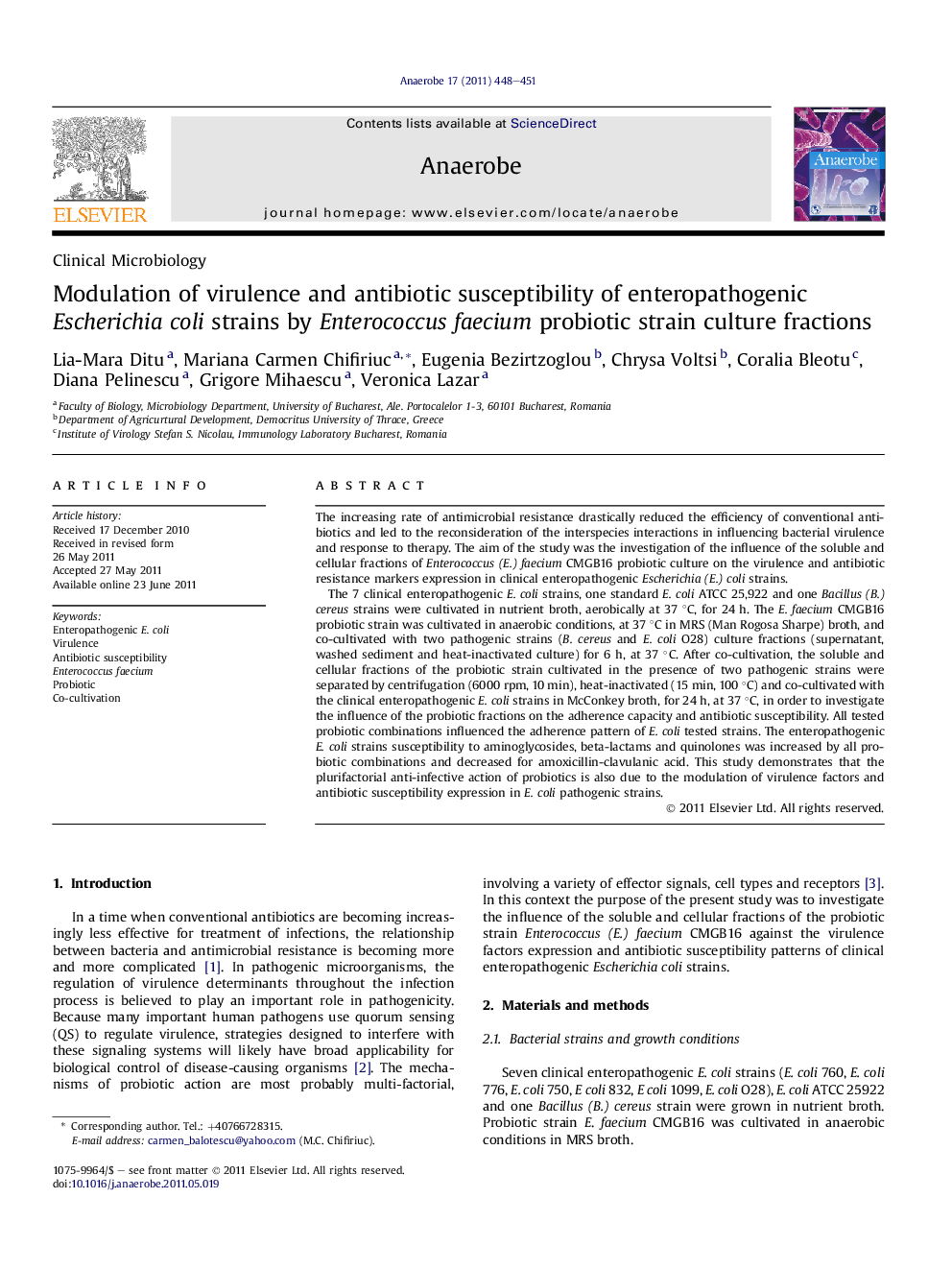| Article ID | Journal | Published Year | Pages | File Type |
|---|---|---|---|---|
| 3395458 | Anaerobe | 2011 | 4 Pages |
The increasing rate of antimicrobial resistance drastically reduced the efficiency of conventional antibiotics and led to the reconsideration of the interspecies interactions in influencing bacterial virulence and response to therapy. The aim of the study was the investigation of the influence of the soluble and cellular fractions of Enterococcus (E.) faecium CMGB16 probiotic culture on the virulence and antibiotic resistance markers expression in clinical enteropathogenic Escherichia (E.) coli strains.The 7 clinical enteropathogenic E. coli strains, one standard E. coli ATCC 25,922 and one Bacillus (B.) cereus strains were cultivated in nutrient broth, aerobically at 37 °C, for 24 h. The E. faecium CMGB16 probiotic strain was cultivated in anaerobic conditions, at 37 °C in MRS (Man Rogosa Sharpe) broth, and co-cultivated with two pathogenic strains (B. cereus and E. coli O28) culture fractions (supernatant, washed sediment and heat-inactivated culture) for 6 h, at 37 °C. After co-cultivation, the soluble and cellular fractions of the probiotic strain cultivated in the presence of two pathogenic strains were separated by centrifugation (6000 rpm, 10 min), heat-inactivated (15 min, 100 °C) and co-cultivated with the clinical enteropathogenic E. coli strains in McConkey broth, for 24 h, at 37 °C, in order to investigate the influence of the probiotic fractions on the adherence capacity and antibiotic susceptibility. All tested probiotic combinations influenced the adherence pattern of E. coli tested strains. The enteropathogenic E. coli strains susceptibility to aminoglycosides, beta-lactams and quinolones was increased by all probiotic combinations and decreased for amoxicillin-clavulanic acid. This study demonstrates that the plurifactorial anti-infective action of probiotics is also due to the modulation of virulence factors and antibiotic susceptibility expression in E. coli pathogenic strains.
► We studied soluble and cellular fractions of probiotic Enterococcus faecium culture. ► How they influence virulence expression in enteropathogenic Escherichia coli strains. ► How they modulated the antibiotic susceptibility of enteropathogenic Escherichia coli strains. ► Susceptibility to aminoglycosides, beta-lactams and quinolones was increased. ► The adherence index was decreased and adherence pattern was changed.
